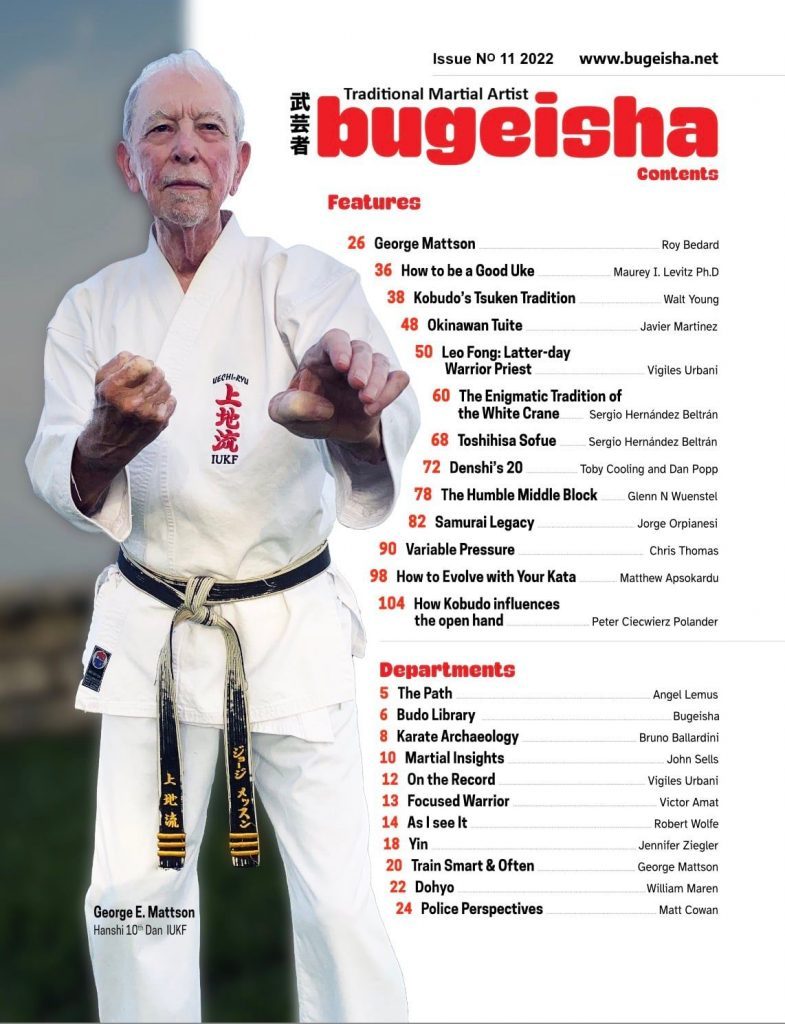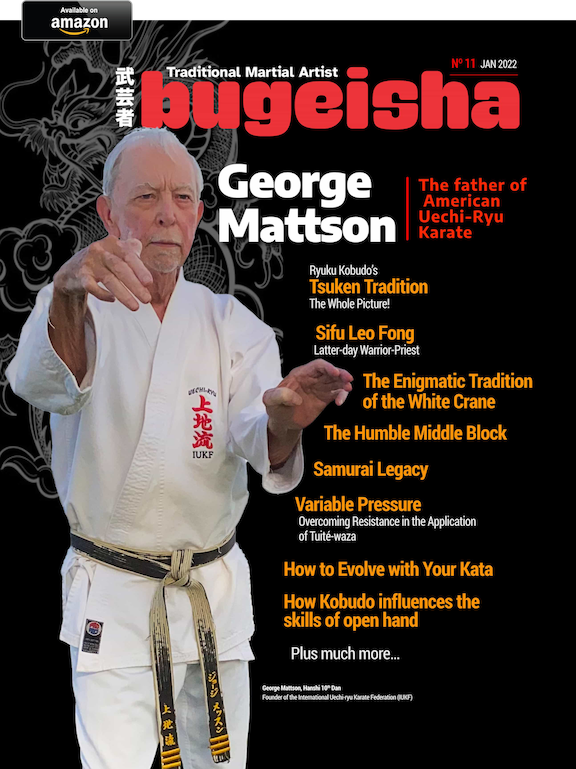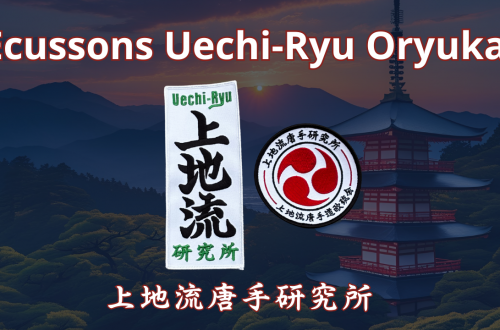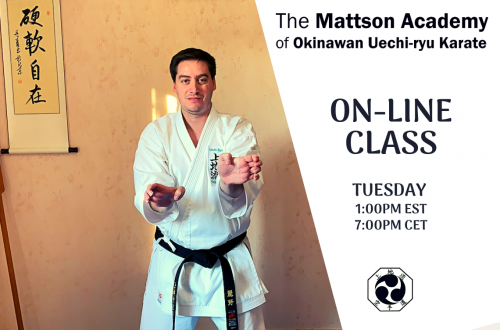
Mattson sensei in Bugeisha
The 11th issue of the newly revamped American magazine Bugeisha (January 2022) was released this week, with George Mattson on the cover.
Two Must-Read Articles on Uechi-Ryu
Bugeisha is a well-known martial arts magazine across the Atlantic. Initially published in the 1990s, it has recently returned in a new and improved format, enriched with fresh and insightful content.
In the January 2022 issue, you’ll find two articles dedicated to George Mattson, who is widely regarded as the father of Uechi-Ryu in America. Mattson was, in fact, the first foreigner to earn a black belt in Okinawa.
- The first article, written by Roy Bedard, explores the martial life of Sensei Mattson—from his early training in Okinawa to the present day.
- The second, penned by George Mattson himself, focuses on Uechi-Ryu practice, particularly the importance of proper elbow and shoulder positioning.
Both articles offer valuable insights, not only for Uechi-Ryu practitioners but also for martial artists curious to learn more about this traditional style.

Training in Okinawa
In Roy Bedard’s main article, readers can follow the journey of a young American serviceman in Okinawa, how he met Ryuko Tomoyose, and why Tomoyose offered to teach him a martial art that had, until then, been reserved primarily for locals.
It’s fascinating to understand Tomoyose’s intention to share his school’s teachings beyond Japan and how he received Kanei Uechi’s blessing to teach the art to a foreigner.
At that time, training in Okinawan dojos was particularly tough—much harsher than Tomoyose Sensei’s more flexible approach, whom Mattson affectionately refers to as “Tommy.” As a young military man, Mattson experienced the rigorous nature of Uechi-Ryu, embracing practices like the Sanchin test to condition his body and transform himself into a true athlete.
By the end of his stay in the Ryukyu Islands, Mattson had earned his first dan and made a promise to both Kanei Uechi and Ryuko Tomoyose to bring their martial art back to America.

Upon returning to the U.S., Mattson began teaching Uechi-Ryu and even wrote the first Western book on karate, The Way of Karate.
His school grew quickly. He founded the North American Uechi-Ryu Federation, which later became the American Federation, and eventually the International Uechi-Ryu Karate Federation (IUKF).
While this part of the story is fairly well-known in the Western Uechi-Ryu world, what makes the article especially interesting is Mattson’s reflection on his journey, including moments of doubt and mistakes made along the way.
The Old Way
As Sensei Mattson explains in this interview, Tomoyose’s method emphasized softness and fluidity—far removed from robotic or overly rigid techniques.
In his youth, George preferred the intensity of Sanchin training, seeking to forge a strong, resilient body. But with time and experience, he began to reembrace Tomoyose’s softer approach, rooted in Traditional Chinese Medicine principles. This method promotes harmony between body and mind, natural movement, avoiding excessive muscular contraction, and maintaining a proper tempo—as the samurai Miyamoto Musashi once said, “Tempo is everything.”
In retrospect, Mattson admits that he should have introduced Uechi-Ryu to the U.S. through this traditional approach, rather than promoting a purely athletic version of the art.

This original method has been referred to by Mattson as “The Old Way.” It is this Way that he has continued to develop and pass on to his students over the years.
Personal Review
Even though I am quite familiar with Sensei Mattson’s life and philosophy—having had the privilege to train with him regularly—I found this article particularly meaningful. I believe it is a true gift (especially as we approach the holiday season). It is a heartfelt and honest account of his martial journey, sharing what he might have done differently.
As for me, I must humbly admit that I only recently started reading Bugeisha (I usually read Yashima in French and hadn’t explored American martial arts magazines). I discovered Bugeisha when Sensei Mattson contacted me to help translate some Japanese writings from Tomoyose Sensei for use in his article.
Reading Bugeisha is easy and enjoyable. It focuses on real martial practice. I especially appreciated the article dedicated to White Crane Kung Fu.

vailable in France!
To my surprise, Bugeisha is available in France—it can be ordered directly through Amazon, and at the same price as in the U.S.
There are three versions available:
- Kindle version: $9.95
- Black & white paperback: $9.95
- Color deluxe edition: $17.95
If you’d like to get a copy, simply click on the image below!





